28:22.33S 30:35.31E 12th – 14th April 2012 Isandlwhana, Fugitive and Rorke’s Drift Near Dundee, Kwa Zulu Natal This area set the scene for the film ‘ZULU’ which made Michael Caine famous in the 1960’s. We’ve not seen the film since, but have vague memories of that tremendous scene where 4,000 thousand ZULU warriors surprised the British Army encampment by surrounding them from the high ground, chanting their war cry at Rorke’s Drift. The date was January, 1879. It was the day of the eclipse of the sun, and the Zulus had not wanted to fight. However, they were surprised by a shot from one of the British scouts, who suddenly came across thousands of them all crouched down on their shields, awaiting to attack the next day. Some 25,000 Zulus attacked the 1,500 British who had been left to fight at the base of a sphinx like craggy hill called Isandlwhana, in Zulu Territory, were mostly all killed, other than a handful who escaped together with 4,000 Zulus. It was the worst disaster in British millitary history, badly defended and organised against all the rules. More soldiers were lost than at the battle of Waterloo. That same afternoon, another 120 soldiers left to fight at Rorke’s Drift, which was the place where stores and the hospital had been set up, on the Natal side of the river were also surprised by another 4,000 Zulus who should have attacked the main camp, but decided to cross into Natal, across the Buffalo river against their chief’s order. In this case, the soldiers of the 24th Welsh Foot, some of whom were English, stood their ground and were well entrenched, and won the night, despite all odds. The highest number of Victoria Crosses ever were awarded to the men for any action since, mainly Welsh on that day of fighting than any other in the history of that medal. The story is well told and narrated by the owners of the guest lodge we stayed at, called Fugitive’s Drift. It gave us a lot of insight into the history behind the arrival of the British settlers, the Dutch settlers and also the history of the Zulus from the early 1800’s. 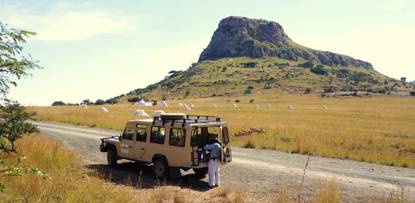
Isandlwhana Hill, where the British encampment was slaughtered by the Zulus in 1879. The White stones mark the spot where up to 8 soldiers are burried close to the area where they were slain. 
Joseph, the grandson of one of the Zulus chiefs, tell us the story from their side. 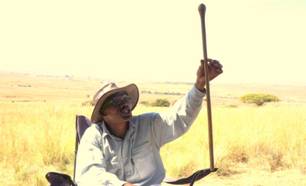
Here Joseph is explaining how the chief in charge of the main attack, an old warrior in his 70’s told his men not to give up in the face of the constant killing from the rifles of the British infantary men. And run up and down his charges telling them to fight till the last. Had they given up, the British might well have won the day. The stick he is holding is typical of that used by Zulus today, to crack a head open with its rounded end. It was a wonderful sensation, sitting in the shade of the tree, listening to his story telling, just like his ancestors had handed down their history through the centuries, as they could not read nor write. 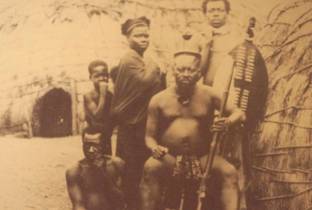
The 70 year old Zulu Chief, before the battle in which he was killed The Zulus came charging down this hill, which is now peacefully settled by Zulu families, living on farming and milk from the cows which graze on the surrounding lands. 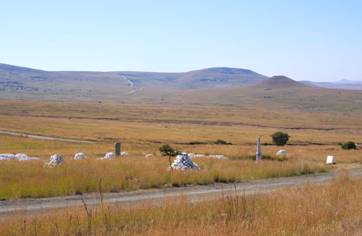
That’s the hill in the distance, from which the Zulu attack came. The graveyards are the white stones in front. 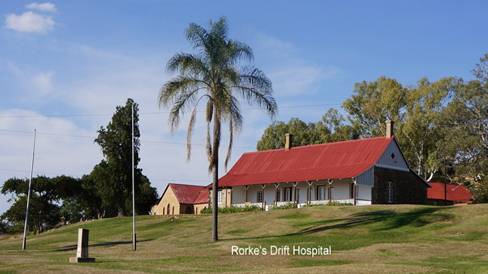
This is now a museum, but was originally settled by a man called Jim Rorke who used it as his main house. He had made good friends of the Zulus, just the other side of the Buffalo river, and enjoyed going out shooting and hunting with the chief of the Zulus. It was the British who decided to fight them, as they felt threatened having them so close to their recentlly acquired land in Natal. The house and store were acquired by Lord Chelmsford, who arrived in December 1878 with 4,000 men, 100 carts pulled by 8 oxen per cart, plus all the staff who were the medical men, servants and cooks for the military. 
We were narrated the story of Rorke’s Drift, sitting in the shade of this tree, opposite the hospital in the previous picture, by Andrew Rattray, the grandson of the owner of Fugitive’s Drift, who made this whole episode in the life of the struggle between the Zulus and the British into a thoroughly well researched story, from both points of view, And told so well it was charged with emotion, as stories of the men who won the victoria crosses unfolded on site. 
Andrew Rattray, standing on the verandah overlooking Fugitive’s Drift, a crossing in the Buffalo river, across which the soldiers who were not slaughtered escaped, despite the roaring current. 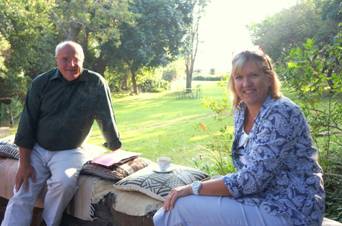
Nicky Rattray (right) is Andrew’s Mum. Her husband, David, was shot and killed just a few years ago, by a robber. Their good friend, Ben on the left now runs the Rattray foundation which was set up to raise money for the Zulu children to be educated in the area. 
These are some of the children for whom the fundraising is being done 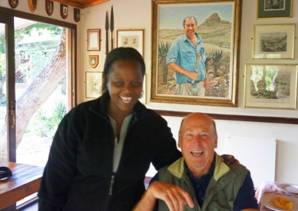
This lady is the member of staff who was serving us breakfast, lunch and dinner at the lodge. David was constantly joking that he would pay 9 cows instead of 10 to marry her! In the background is the painting of David Rattray. 
A replica of the Queen’s colours hangs behind us above the breakfast bar. The lounge behind is filled with memorabilia of the event and time in 1879. 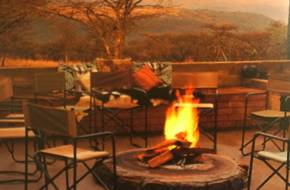
The fire around which we sat in the evenings for drinks with other guests before sitting down to dinner all together in the dining room. 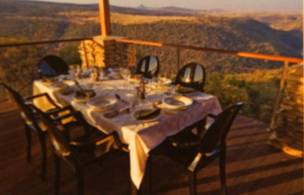
The lunchtime table overlooking Fugitive’s Drift, from which the Queen’s colours had been recovered. 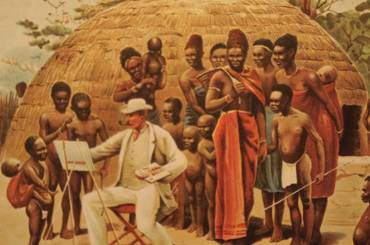
The army artist,William Whitelock Lloyd being watched by the Zulus as he paints the scenes before him, as below: 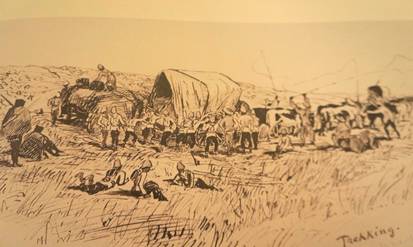
The army and soldiers treckking throuh rough ground with the oxen trying to pull the heavy carts loaded with supplies of water,food and ammunition. 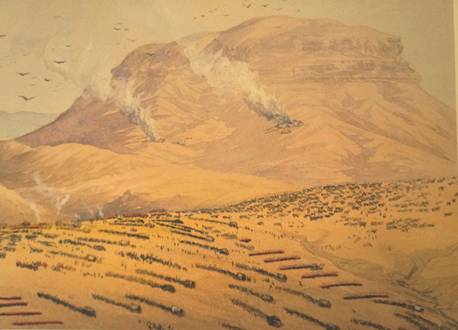
The artist gives an amazing impression of how thousands of carts and oxen, and army personnel appear as they treck across the veldt in Natal to position themselves for battle 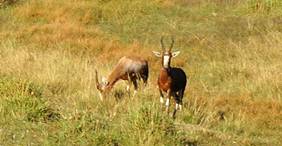 
Fugitive’s Drift is also a game reserve, where we saw these bessbuck, and giraffe. 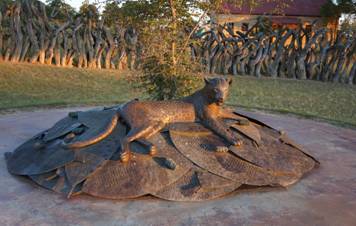
There is also leopard in the park, but it’s so shy, Andrew has not seen it for 3 years. The leopard is used here as the monument to the dead Zulus at Rorke’s Drift, lying on their shields. I finally got the picture of the buffalo which we originally saw in Kruger National Park, but the painting below is so much better 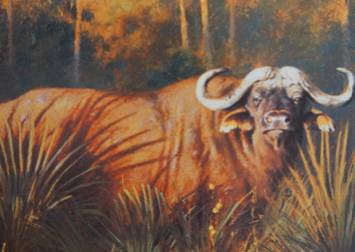
| 
